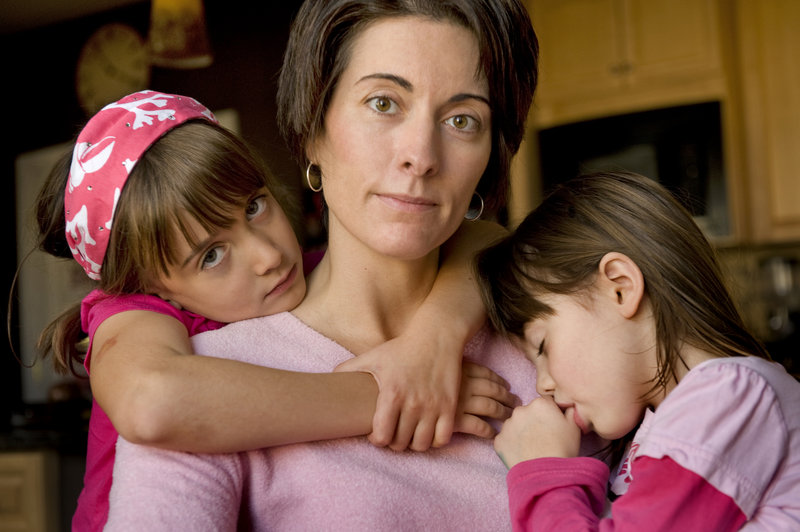WASHINGTON – Mass had just begun at Corpus Christi Mission Church when Sunday school teacher Jennifer Zickel glanced at the church bulletin and saw something that caught her eye.
Tucked in with announcements about a new donation system and a church dinner was news that Zickel, the mother of two girls, had been dreading: Corpus Christi would no longer train girls to be altar servers.
Zickel burst into tears and ran to the bathroom.
“I knew right then that our family couldn’t stay at this church anymore,” Zickel said, her voice breaking. “I’m a mama bear, and they’re going after my girls.”
The decision last fall by Corpus Christi’s pastor, the Rev. Michael Taylor, and the response of Zickel and about a dozen other families who left the 1,100-family suburban South Riding, Va., church reflect ongoing tensions among American Catholics over the role of women. About 50 families from across the country wrote letters of protest to the Arlington Catholic Diocese.
The subject has played out unusually in the diocese, which was the next-to-last in the country to say, in 2006, that girls were eligible to help priests at the altar. (The diocese in Lincoln, Neb., still has a boys-only policy.) Arlington Bishop Paul Loverde left the decision up to individual priests.
Five years later, about 60 percent of the diocese’s 68 parishes across northern and eastern Virginia still allow only altar boys, a diocese spokeswoman said.
Some share Taylor’s belief that the positions should be reserved for boys, who may become priests and help ease a major Catholic clergy shortage. Girls who had already trained as altar servers at Corpus Christi were allowed to continue, but they cannot wear the new black, priestlike robes the boys began wearing. People who oppose girl servers see the task as priest-like and note that the church teaches priests must be male because they model Jesus.
The Corpus Christi controversy highlights the sometimes-conflicting trends in contemporary Catholicism. The church is trying to hold on to its orthodox doctrine and firm worship structure while making room for cultural shifts, such as gender equality and a push by laypeople for more involvement in decision making.
Overall, women are becoming more prominent in Catholic life. There are twice as many lay ministers, such as baptismal directors or school directors, as there are priests, and three-quarters are women. Women also increasingly serve in ritual roles during Mass, such as helping priests with Communion and doing readings.
But Catholic priests ultimately hold authority in their parishes and answer only to clergy above them, not to laypeople.
Taylor, who did not return phone calls for comment, wrote in the parish bulletin that he hoped the church would “create opportunities, and perhaps clubs” for girls to help them find other ways to serve the church.
Bishop Loverde has not responded directly to requests by Zickel and others to meet, people on both sides said.
Caitlin Bootsma, the diocese’s spokeswoman, said she thinks the number of displeased parishioners is very small.
“The rest of the community either supports it or is getting used to it,” she said. In the diocese overall, “we don’t hear much on the issue at all anymore.”
Mary Barnes choked up as she described watching her seventh-grade daughter serve during Mass in a white robe while the boys wore black ones.
“It’s really hard to sit in church every weekend looking at that,” said Barnes, a manager at AOL who has attended Corpus Christi for 13 years. “It’s demoralizing, understanding you’re not really wanted.”
The Vatican in 1994 approved the participation of girls in altar serving, and the official Vatican newspaper has run pieces characterizing the acceptance of girls as correcting a “profound inequality.”
But Pope Benedict XVI and his predecessor, Pope John Paul II, have in general sided more often with traditionalists who fear watering down core Catholic teachings, such as that God sets separate roles for men and women.
In recent months, liberal Catholic publications have written about churches where girls are no longer being trained to be altar servers, saying the change reflects a turn to the past.
But debate over such subjects is less widespread than when the Vatican first allowed altar girls.
Some experts on U.S. Catholicism say this is because many liberal Catholics have left the church in recent years.
Barnes, despite her opposition to Taylor’s decision, says she encourages her older daughter to keep serving, in part because “a lot of women” say they are grateful to see her performing tasks such as helping prepare the altar for Eucharist and carrying the cross during entrance and exit processions.
Asked whether she has considered leaving Corpus Christi, Barnes said: “Many other churches in the area also don’t allow altar girls. And I want to be glass-half-full, that if they see our perseverance, the attitudes will change.”
Send questions/comments to the editors.



Success. Please wait for the page to reload. If the page does not reload within 5 seconds, please refresh the page.
Enter your email and password to access comments.
Hi, to comment on stories you must . This profile is in addition to your subscription and website login.
Already have a commenting profile? .
Invalid username/password.
Please check your email to confirm and complete your registration.
Only subscribers are eligible to post comments. Please subscribe or login first for digital access. Here’s why.
Use the form below to reset your password. When you've submitted your account email, we will send an email with a reset code.